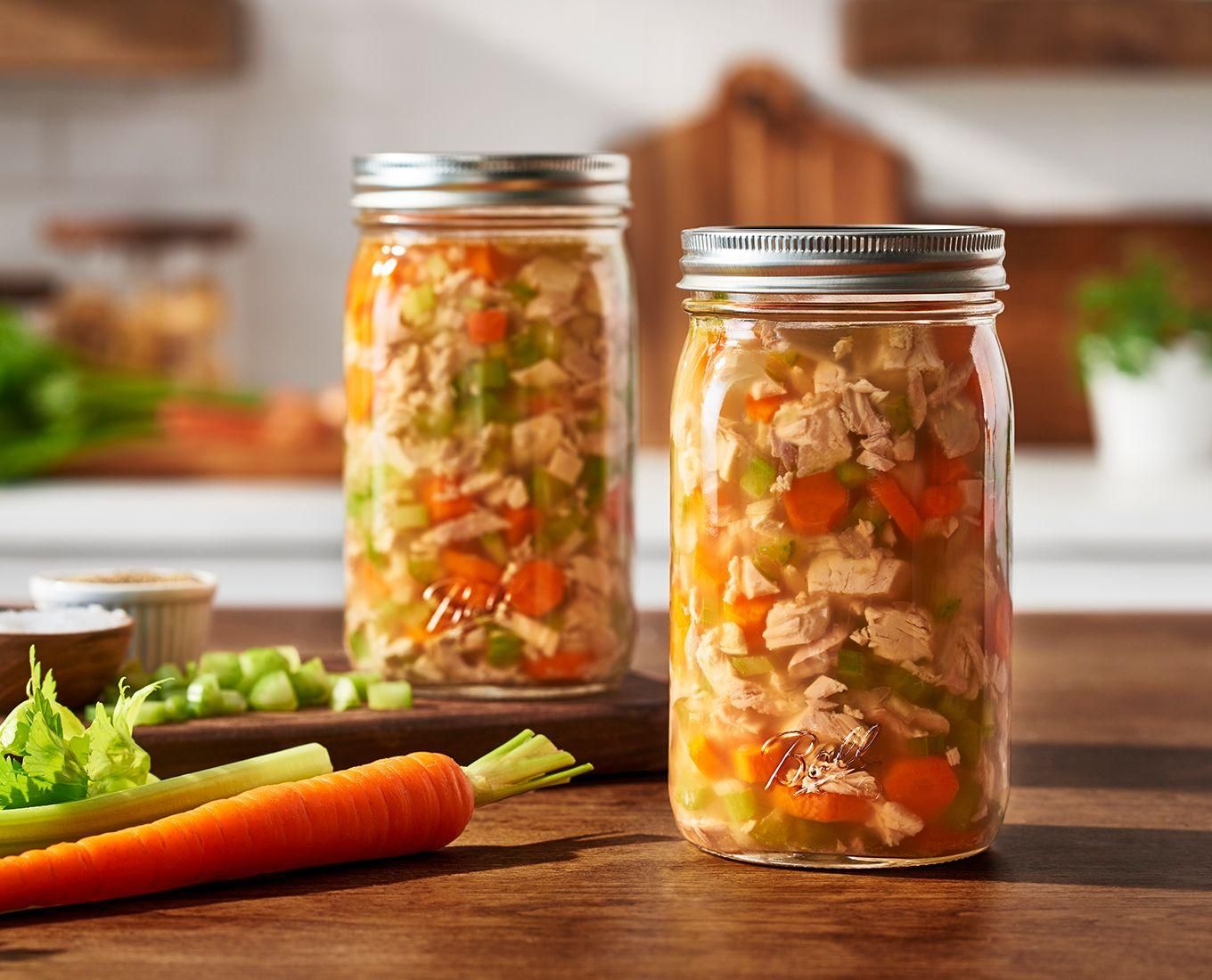

Articles
How To Store Chicken Soup
Modified: December 7, 2023
Want to learn the best way to store chicken soup? Read our informative articles for expert tips on storing and preserving your delicious homemade chicken soup.
(Many of the links in this article redirect to a specific reviewed product. Your purchase of these products through affiliate links helps to generate commission for Storables.com, at no extra cost. Learn more)
Introduction
Chicken soup is a comforting and delicious meal that is perfect for any time of the year. Whether you have made a big batch of soup or have leftovers from a previous meal, it’s important to store it properly to maintain its flavor and freshness. In this article, we will guide you through the steps to store your chicken soup correctly to ensure its longevity and taste.
When it comes to storing chicken soup, there are a few key factors to consider. The container you choose, the way you cool and seal the soup, and the method of refrigeration or freezing all play a crucial role in maintaining its quality. By following these steps, you can ensure that your chicken soup remains safe to eat and preserves its delicious flavors.
So, let’s dive into the details of how to properly store your chicken soup!
Key Takeaways:
- Properly storing chicken soup involves choosing the right container, cooling it quickly, and sealing it tightly. Label and date containers, and refrigerate for short-term storage or freeze for longer shelf life.
- Thaw and reheat frozen chicken soup safely for a delicious meal. Following proper storage and reheating techniques ensures the soup remains flavorful and safe to consume.
Read more: How To Store Chicken Noodle Soup
Step 1: Choosing the Right Container
When it comes to storing chicken soup, selecting the right container is essential. You want to choose a container that is both leak-proof and safe for storing food.
Firstly, it is recommended to use containers made of either glass or food-grade plastic. These materials are safe for storing food and do not react with the soup, ensuring that the flavors remain unaffected.
Additionally, consider the size of the container. It should have enough space to accommodate the desired amount of chicken soup, leaving some room for expansion if you plan on freezing it. It is recommended to use containers with tight-fitting lids to prevent air and moisture from entering, which can lead to spoilage.
If you prefer to use glass containers, make sure they are oven-safe. This allows you to easily reheat the soup without having to transfer it to another dish, saving you time and effort.
Another important factor to consider is the shape of the container. Choosing containers with straight sides makes it easier to stack them in the refrigerator or freezer, optimizing storage space.
In summary, when choosing a container for storing chicken soup, keep these tips in mind: use glass or food-grade plastic containers, choose the right size, opt for tight-fitting lids, consider oven-safe options, and select containers with straight sides for efficient storage.
Step 2: Cooling the Soup
After preparing a delicious pot of chicken soup, it’s important to cool it down properly before storing it. Cooling the soup quickly helps to prevent bacterial growth and maintain its freshness.
Here’s how you can cool your chicken soup effectively:
- Transfer the soup into a shallow container: Pour the hot soup into a wide and shallow container rather than leaving it in the cooking pot. This increases the surface area and allows the soup to cool faster.
- Place the container in an ice bath: Fill a larger container or sink with ice and water, then place the soup container into the ice bath. Make sure the water level is below the lid to prevent any water from seeping into the soup. The cold temperature of the ice bath helps to rapidly lower the soup’s temperature.
- Stir occasionally: While cooling the soup, stir it occasionally to distribute the heat evenly. This speeds up the cooling process and helps to prevent any hot spots that could potentially lead to bacterial growth.
- Use an ice pack or frozen vegetables: If you’re in a hurry and need to cool the soup quickly, you can add an ice pack or a bag of frozen vegetables to the soup container. This will help to reduce the temperature at a faster rate.
Avoid leaving the chicken soup at room temperature for an extended period, as this can lead to bacterial growth and foodborne illnesses. It’s important to cool the soup down to room temperature within two hours and then promptly store it in the refrigerator or freezer.
By following these steps, you can ensure that your chicken soup cools down quickly and safely, preserving its flavors and quality for future consumption.
Step 3: Properly Sealing the Container
Once your chicken soup is cooled down, it’s crucial to properly seal the container to prevent air and moisture from entering, which can lead to spoilage. Proper sealing helps to maintain the freshness and flavor of the soup.
Here are some tips on how to seal the container effectively:
- Ensure the container is clean and dry: Before sealing the container, make sure it is clean and dry to avoid any potential contamination.
- Use airtight lids: Choose containers with tight-fitting, airtight lids to create a barrier that keeps air out and preserves the soup. This helps to maintain the flavor and prevent the soup from absorbing any odors from the refrigerator or freezer.
- Check for any leaks: Before placing the sealed container in the refrigerator or freezer, double-check for any leaks or cracks in the container or lid. Even a small leak can compromise the quality of the soup.
- Consider using plastic wrap: If you are using a container that does not have a secure lid, such as a bowl or a plate, you can tightly cover it with plastic wrap. Ensure that the plastic wrap is pressed directly against the surface of the soup to create an airtight seal.
Properly sealing the container not only helps to maintain the quality of the chicken soup but also prevents the formation of ice crystals in the freezer, which can affect the texture of the soup.
Remember, tightly sealing the container is an important step in storing your chicken soup and ensuring its longevity. It will help preserve the flavor and freshness of the soup until you’re ready to enjoy it.
Step 4: Labeling and Dating the Container
Labeling and dating the container is a crucial step in storing chicken soup. It helps you keep track of the soup’s age and prevents any confusion about when it was prepared.
Here’s how you can effectively label and date the container:
- Use waterproof labels: It’s important to use labels that are waterproof or resistant to moisture. This will ensure that the label doesn’t smudge or become illegible when exposed to condensation in the refrigerator or freezer.
- Write the date of preparation: On the label, write down the date when the chicken soup was prepared. This will help you determine its freshness and avoid consuming it past its recommended storage duration.
- Include the contents: Along with the date, it’s helpful to mention the contents of the container, such as “Chicken Soup”. This will make it easier to identify the specific soup when you have multiple containers stored.
By labeling and dating the containers, you can easily identify and manage your chicken soup stock. It allows you to prioritize using the oldest soup first, reducing the chance of any soup going to waste.
In addition, if you have different variations of chicken soup, such as spicy or vegetarian, it’s useful to indicate that on the label. This will ensure that you grab the desired soup when you’re ready to defrost and enjoy it.
Don’t forget to place the label on the container before storing it in the refrigerator or freezer. This simple step will save you from any confusion later and ensure that you consume your chicken soup within the recommended time frame.
Store chicken soup in an airtight container in the refrigerator for up to 4 days. For longer storage, freeze in a freezer-safe container for up to 3 months. Thaw in the refrigerator before reheating.
Read more: How To Make Chicken Soup In Slow Cooker
Step 5: Refrigerating the Soup
Refrigerating chicken soup is a popular method to store it if you plan to consume it within a few days. Proper refrigeration helps to maintain the quality and freshness of the soup.
Follow these steps to refrigerate your chicken soup:
- Cool the soup completely: Ensure that the soup is cooled down to room temperature before placing it in the refrigerator.
- Divide into smaller portions (optional): If you have a large batch of soup, consider dividing it into smaller portions before refrigerating. This allows for easier reheating and helps to maintain the quality of the remaining soup.
- Transfer to airtight containers: Pour the chicken soup into airtight containers, leaving some space at the top for expansion. Seal the containers tightly to prevent any air and moisture from entering.
- Place in the refrigerator: Put the sealed containers of chicken soup in the refrigerator on a shelf away from raw meat or any other strong-smelling food. This prevents cross-contamination and ensures that the flavors of the soup are not affected.
- Utilize the refrigerator’s temperature control: Set your refrigerator temperature to 40°F (4°C) or below to keep the chicken soup at a safe temperature and maintain its freshness. Regularly check and adjust the temperature if needed.
It’s important to note that refrigerated chicken soup should be consumed within 3-4 days for optimal taste and safety. If you do not plan on using the soup within that time frame, consider freezing it for longer storage.
By following these steps, you can keep your chicken soup fresh in the refrigerator and enjoy it for several days without compromising its quality.
Step 6: Freezing the Soup
Freezing chicken soup is a great option if you want to store it for a longer period or have leftovers that you won’t consume within a few days. Freezing preserves the flavors and texture of the soup, allowing you to enjoy it at a later time.
Here’s how you can freeze your chicken soup:
- Cool the soup completely: Similar to refrigeration, make sure that the soup is cooled down to room temperature before freezing. This helps to prevent the formation of ice crystals and maintain the quality of the soup.
- Divide into portions: If you have a large amount of chicken soup, it’s best to divide it into individual or family-sized portions. This allows for easier reheating and reduces waste.
- Choose freezer-safe containers: Select containers that are specifically designed for freezing food. These can be glass or plastic containers that are labeled as freezer-safe. Alternatively, you can use freezer bags, ensuring that they are durable and have a strong seal.
- Pour the soup into the containers: Fill each container with the chicken soup, leaving some headspace for the soup to expand as it freezes. For freezer bags, remove as much air as possible before sealing them to prevent freezer burn.
- Label the containers: Use waterproof labels to clearly mark the date of freezing and the contents of each container. This will make it easier to identify and use the soup later.
- Freeze the soup: Place the sealed containers in the freezer, making sure to leave enough space between them for air circulation. It’s ideal to lay the containers flat initially for quicker freezing, and once frozen, you can stack them to optimize freezer space.
Frozen chicken soup can typically be stored for up to 3-4 months without a significant loss in quality. However, for the best taste and texture, try to consume it within the first 1-2 months.
By following these steps, you can properly freeze your chicken soup and have it readily available for a delicious and convenient meal in the future.
Step 7: Thawing and Reheating the Soup
When you’re ready to enjoy your frozen chicken soup, it’s important to thaw and reheat it properly to ensure both safety and optimal taste. Follow these steps to thaw and reheat your soup:
- Thawing the soup:
- Transfer the frozen soup from the freezer to the refrigerator.
- Allow the soup to thaw in the refrigerator overnight or for approximately 24 hours.
- Alternatively, you can thaw the soup by placing the sealed container in a bowl of cold water. Change the water every 30 minutes until the soup is fully thawed. Avoid using warm or hot water, as it can lead to uneven thawing and risk bacterial growth.
- Once fully thawed, give the soup a gentle stir to recombine any separated ingredients.
- Reheating the soup:
- Pour the thawed chicken soup into a saucepan or pot.
- Heat the soup over medium-low heat, stirring occasionally to ensure even heating. Avoid boiling the soup, as it can change the texture and taste.
- If desired, you can add a splash of water, broth, or additional seasonings to adjust the consistency and flavor of the soup.
- Continue heating until the soup reaches a safe and enjoyable temperature. The internal temperature should be at least 165°F (74°C) to ensure that any potential bacteria are killed.
Remember, once you’ve thawed and reheated the chicken soup, it’s important to consume it within a few days and not refreeze any leftovers. This helps to maintain the quality and safety of the soup.
By following these steps, you can thaw and reheat your chicken soup properly, ensuring that it is both delicious and safe to consume.
Conclusion
Storing chicken soup properly is essential for maintaining its flavor, freshness, and safety. By following the steps outlined in this article, you can ensure that your chicken soup remains delicious and ready to enjoy for an extended period.
Choosing the right container, cooling the soup properly, and sealing it tightly are critical steps in preserving the quality of the soup. Labeling and dating the containers help you keep track of the soup’s age and contents, ensuring you use the oldest soup first. Whether you choose to refrigerate or freeze the soup depends on your intended consumption timeframe.
Refrigerating the chicken soup allows you to store it for a few days, while freezing extends its shelf life for several months. Thawing the soup in the refrigerator or using a cold water bath and reheating it gently on the stovetop ensures that the soup is safe to consume and maintains its delicious flavors.
Remember to always follow proper food safety guidelines, such as cooling the soup quickly, ensuring proper sanitation of containers, and adhering to recommended storage durations to avoid any risk of foodborne illnesses.
By taking the time to store your chicken soup correctly, you can enjoy the comfort and flavors of this delicious meal whenever you desire. So, prepare your favorite chicken soup, follow these steps, and have it readily available for a warm and satisfying meal at any time!
Frequently Asked Questions about How To Store Chicken Soup
Was this page helpful?
At Storables.com, we guarantee accurate and reliable information. Our content, validated by Expert Board Contributors, is crafted following stringent Editorial Policies. We're committed to providing you with well-researched, expert-backed insights for all your informational needs.
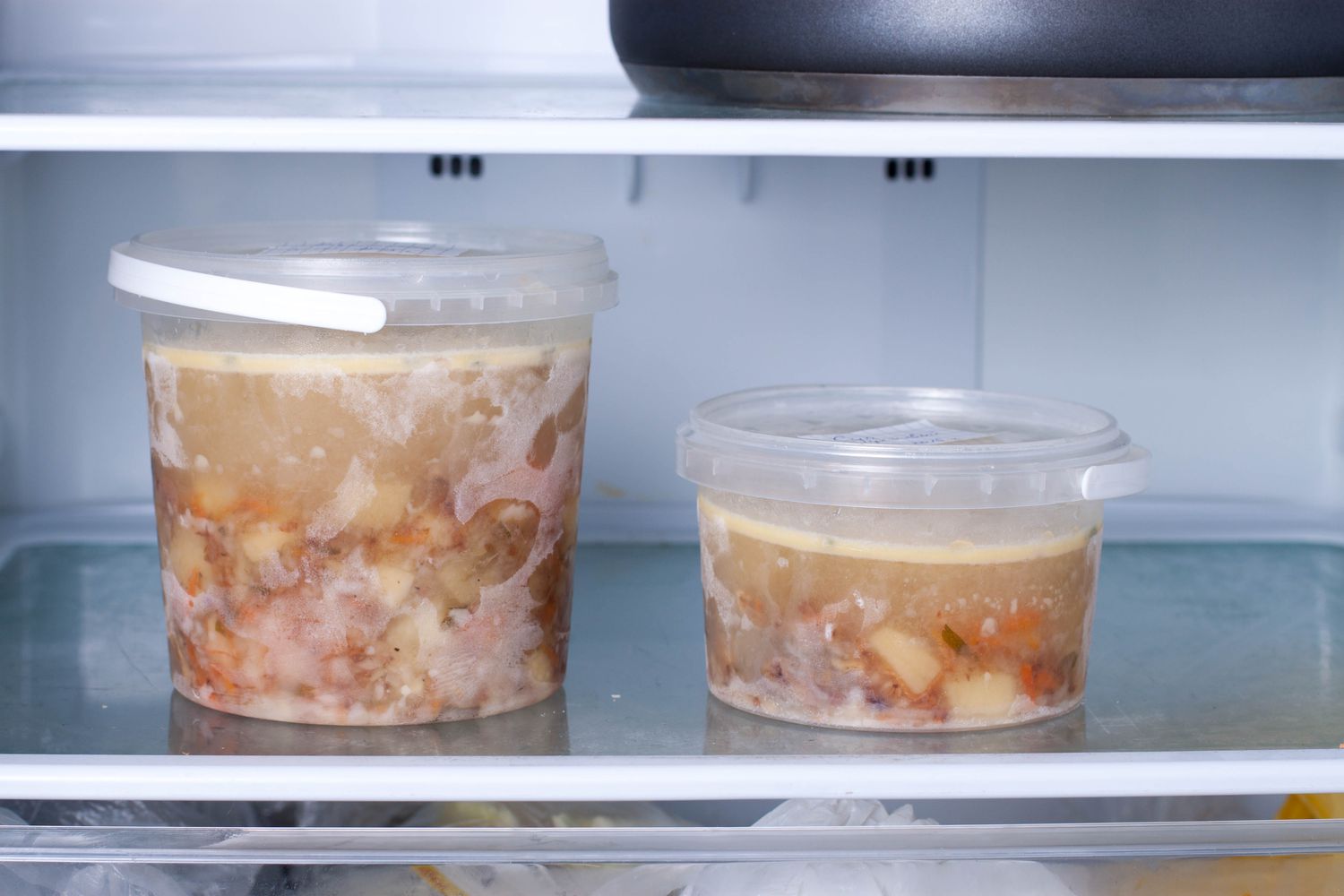
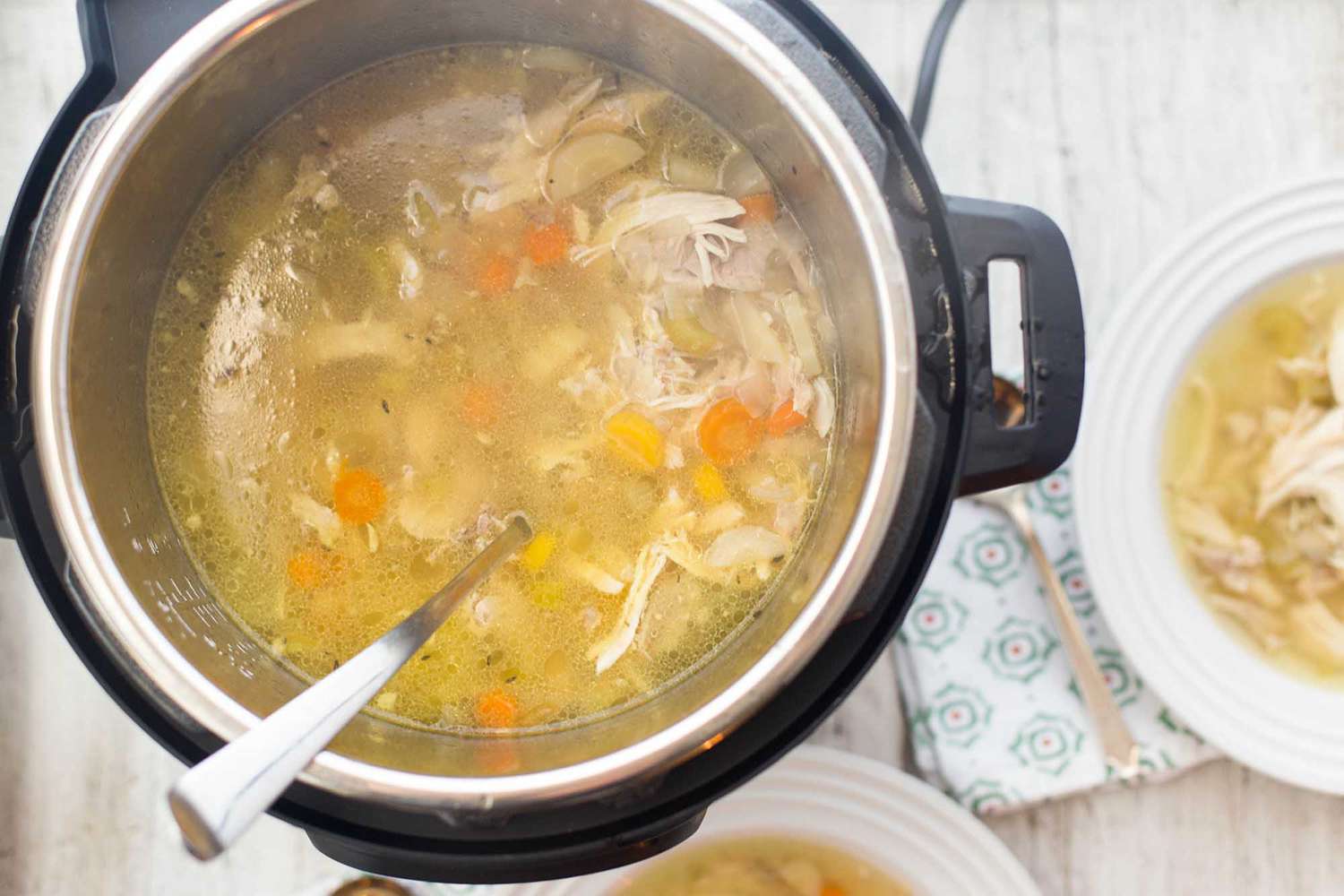

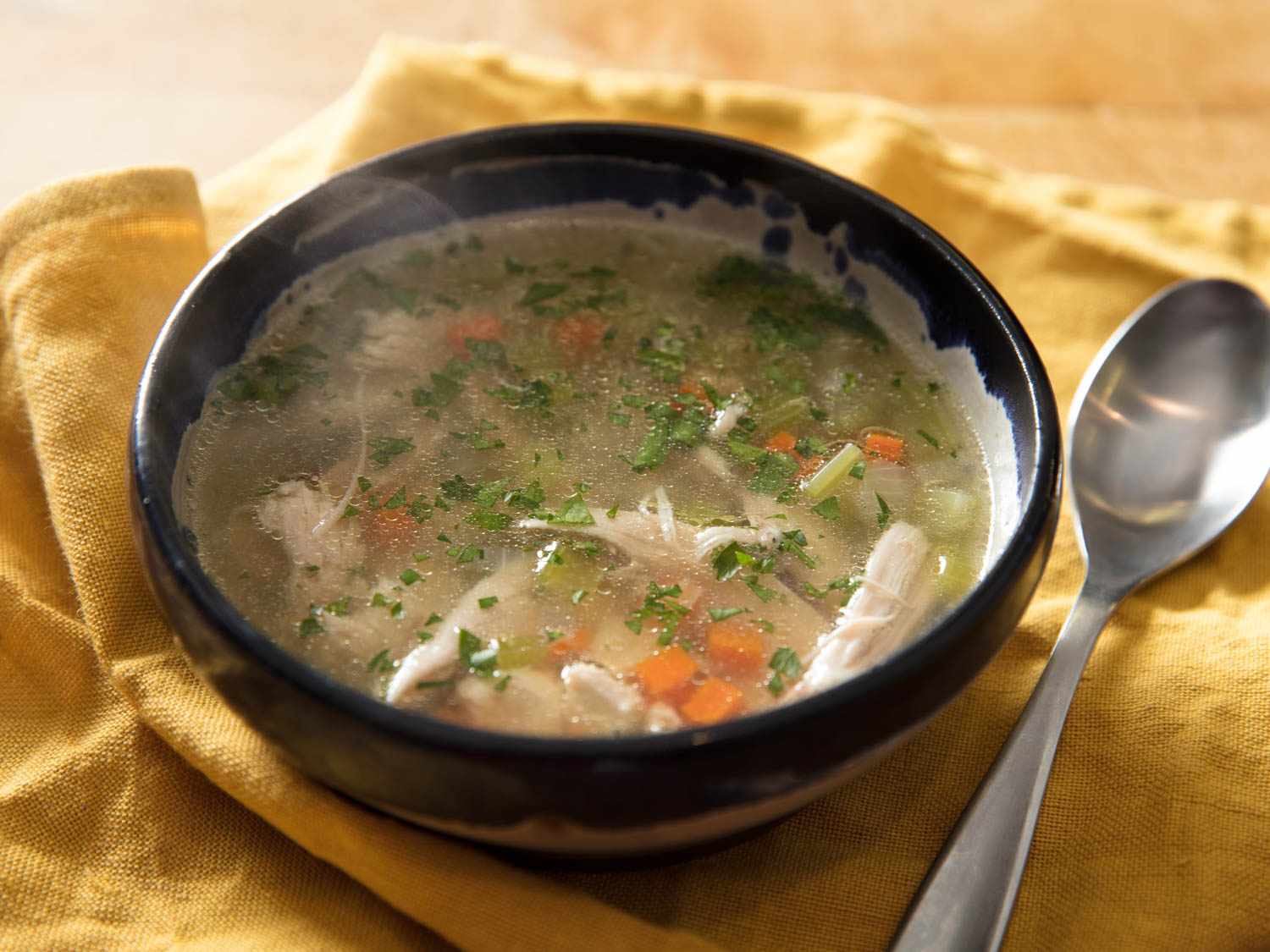
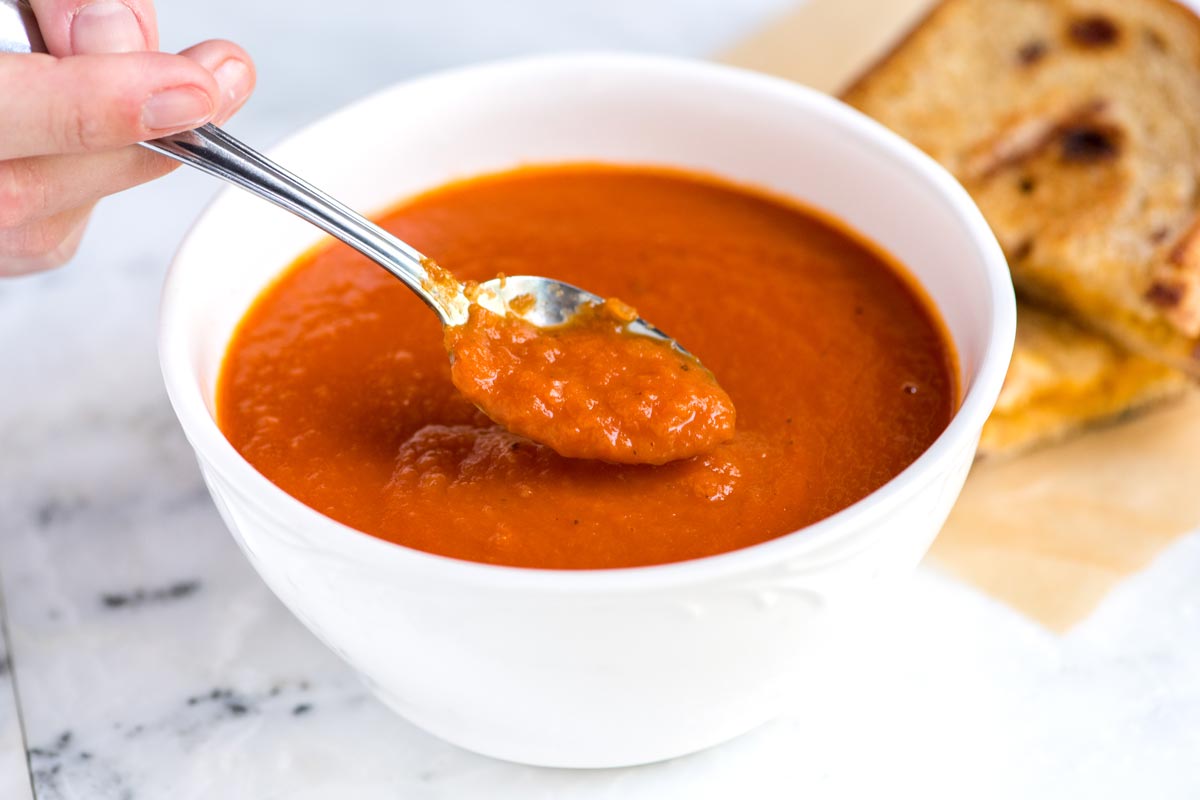

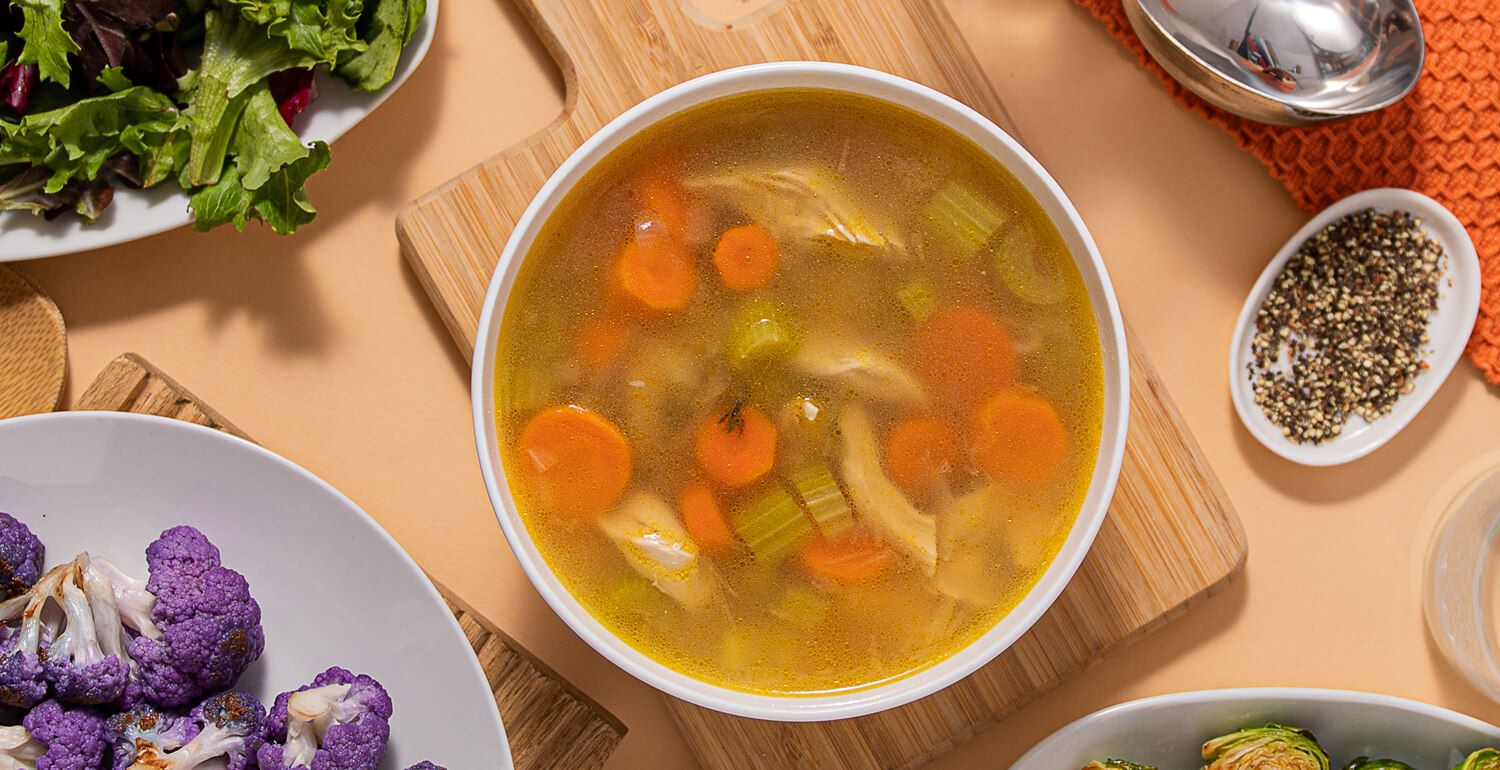
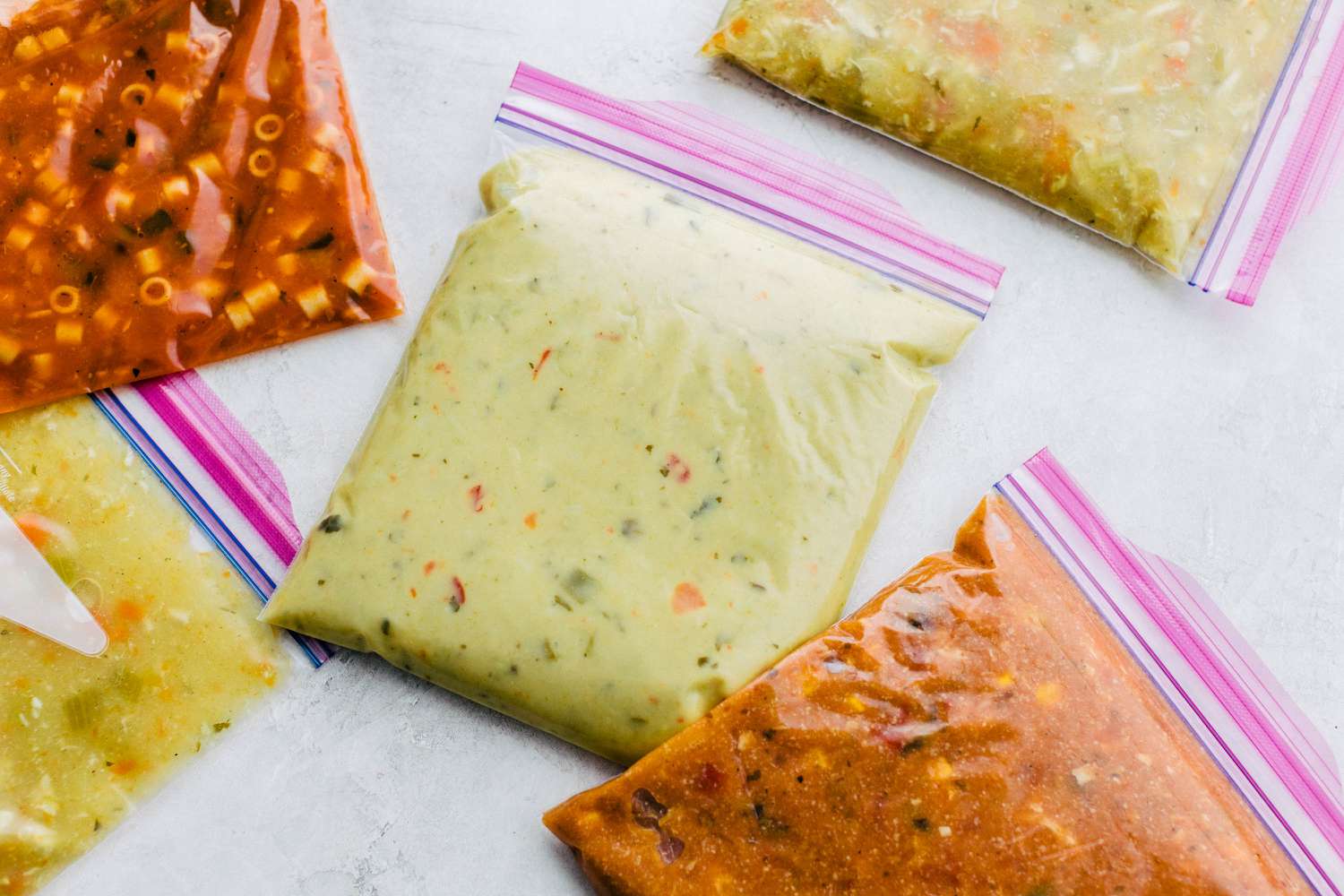
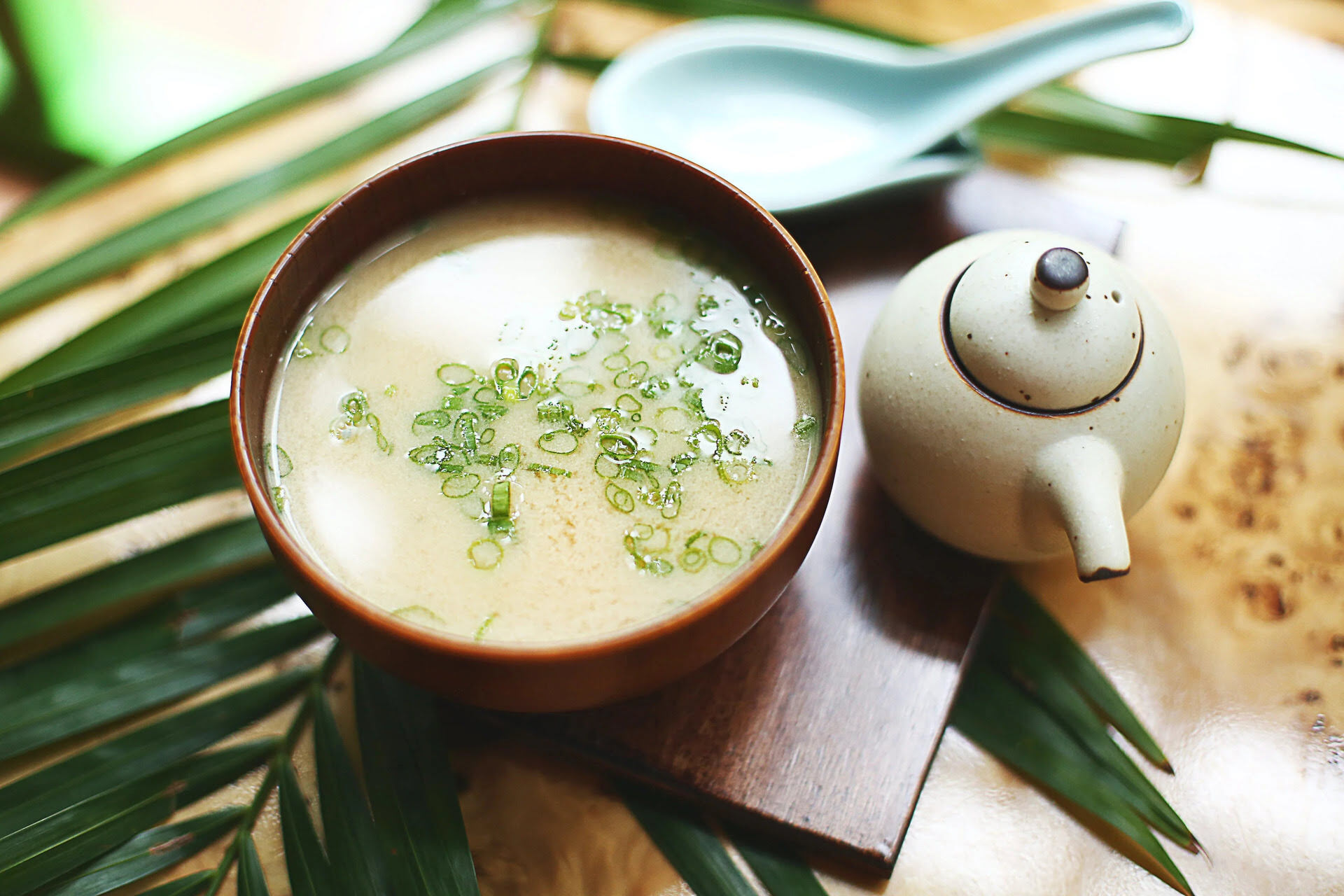
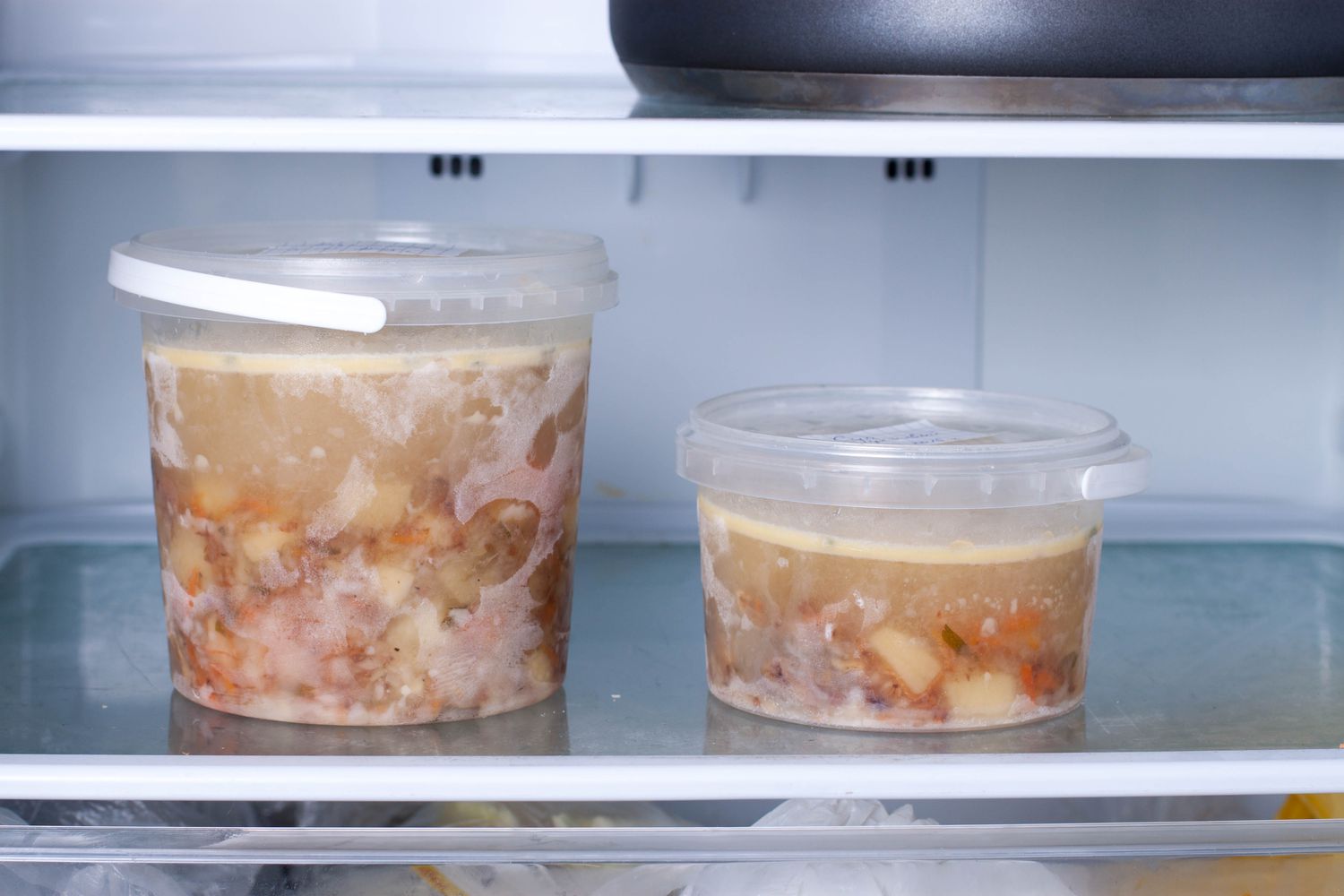
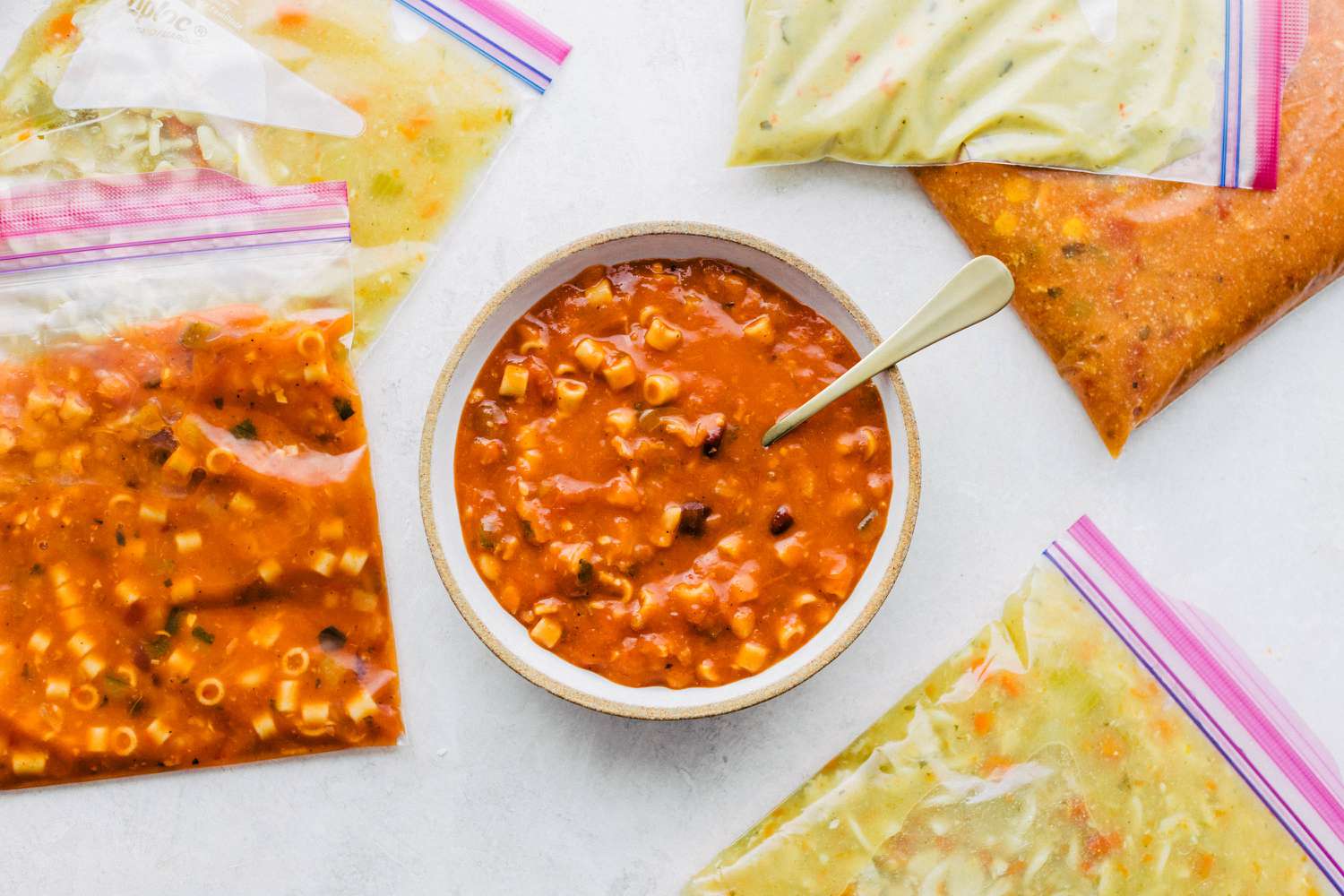


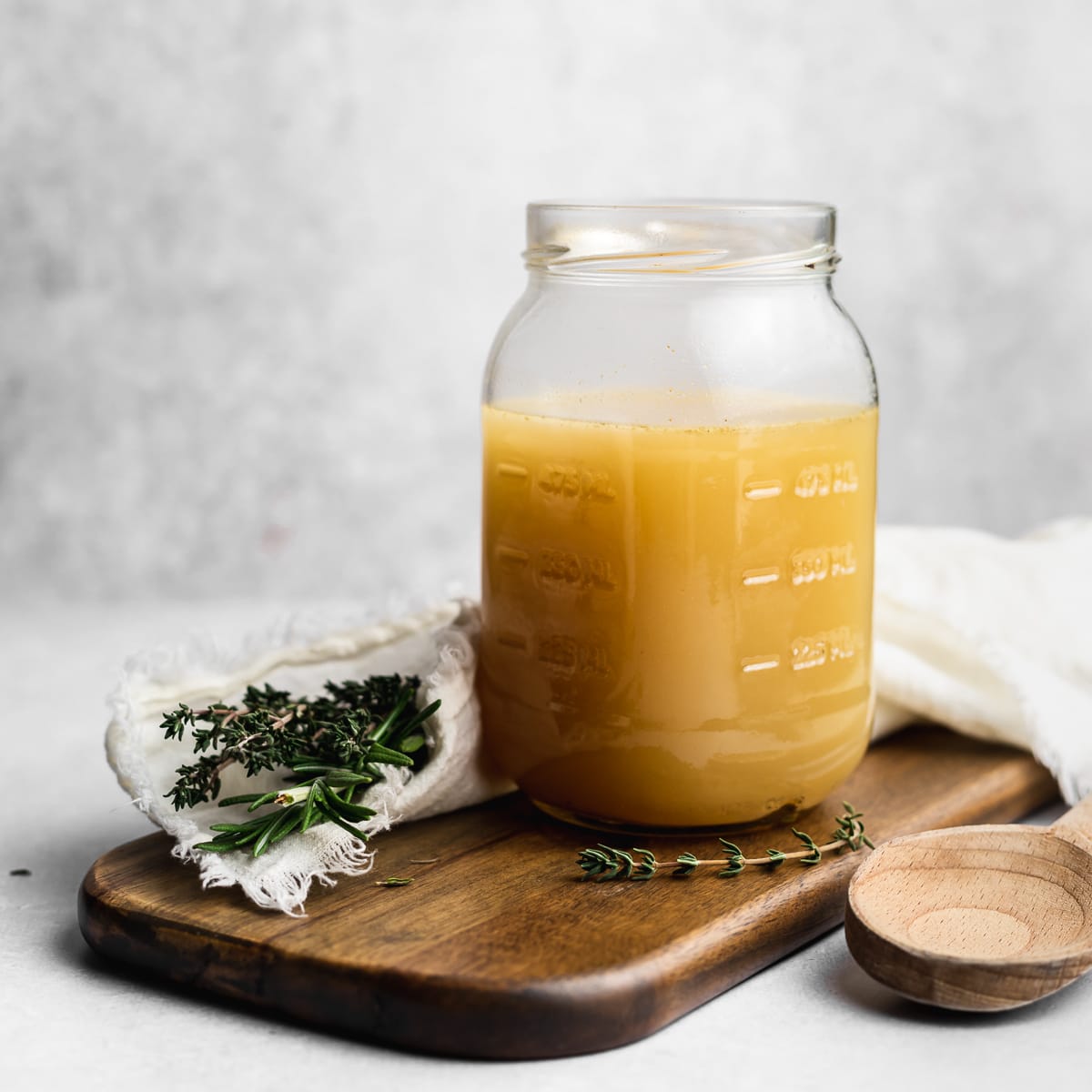

0 thoughts on “How To Store Chicken Soup”